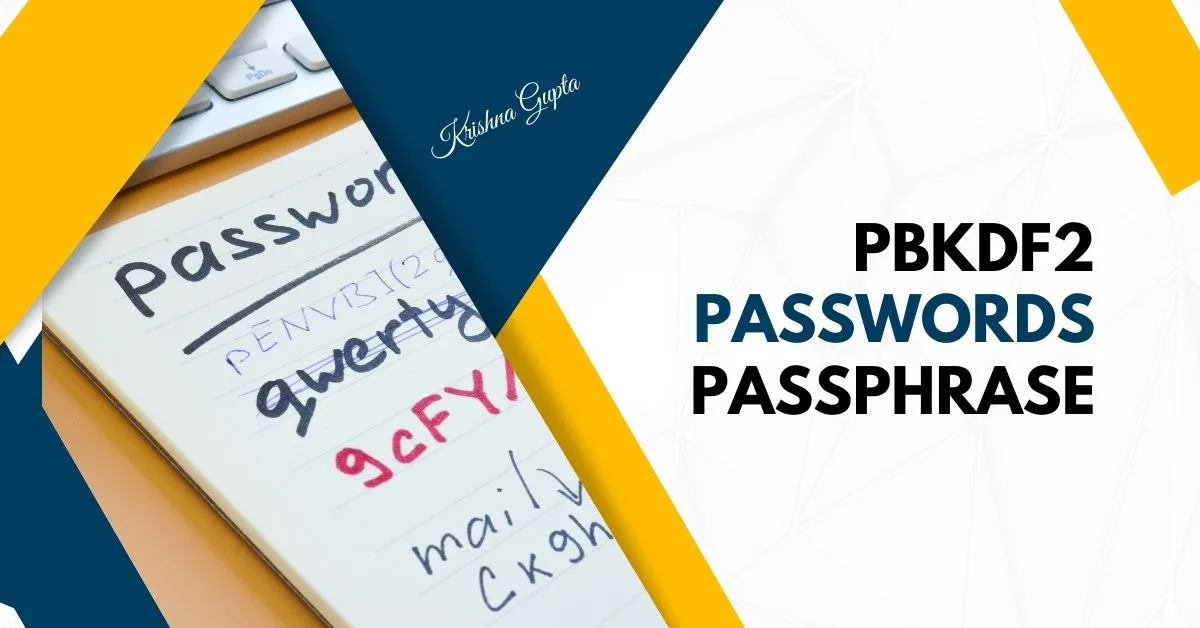The Not-So-Secret Weapon: Demystifying PBKDF2 and Password Security
Passwords, the gatekeepers of our digital lives, are often woefully inadequate. Enter PBKDF2, a not-so-secret weapon in the arsenal of password security. But what exactly is it, and why should you care?
PBKDF2: The Stretchy, Salty Guardian
PBKDF2, or Password-Based Key Derivation Function 2, is a fancy way of saying it takes your password and makes it much harder to crack. Imagine a bouncer stretching and twisting a password before letting it into the VIP club. That’s PBKDF2 in action.
Here’s how it works:
- Salty Surprise: PBKDF2 doesn’t take your password alone. It throws a random string called a “salt” to make things unique. Even if two users have the same password, their salted versions are different, confusing attackers.
- Hash it, Hash it Well: The password and salt are fed through a hashing function like SHA-256 multiple times (think “iterations”). This “stretching” process significantly slows down guessing passwords, as each attempt requires many calculations.
- Key to the Kingdom: The output of this process is a cryptographic key. This key can be used for encryption, authentication, or any other purpose requiring a secure string.
Why PBKDF2? Advantages of a Stretchy Friend:
- Brute Force Buster: The slow, stretched key generation makes brute-force attacks, where attackers try millions of password combinations, computationally expensive and time-consuming.
- Rainbow Table Wrecker: Adding a salt renders pre-computed “rainbow tables” of hashed passwords useless, as each user’s salt creates a unique hash.
- Standardised Hero: PBKDF2 is a widely used and documented standard, ensuring consistent and reliable implementation across different systems.
- Configurable for Speed: The number of iterations can be adjusted to balance security and performance. More iterations are more secure but take longer.

But Wait, Every Hero Has a Flaw:
- Not Perfect: Though much better, PBKDF2 isn’t foolproof. Highly sophisticated attacks targeting weak passwords are still a possibility.
- Performance Considerations: High iteration counts can slow down login times, especially on resource-constrained devices.
- Not Alone: Newer alternatives like Argon2 offer improved security, though at the cost of even higher computational demands.
Where PBKDF2 Shines:
- Online Authentication: Protecting user accounts from unauthorised web applications and service access.
- Data Encryption: Securing sensitive data when stored or transmitted.
- Key Derivation: Generating encryption keys from passwords for various purposes.
Alternatives on the Horizon:
While PBKDF2 remains a valuable tool, newer contenders like Argon2 and bcrypt offer potentially better security with increased computational demands. Choosing the correct algorithm depends on your specific security needs and performance requirements.
Remember: PBKDF2 is a crucial layer in password security, but it’s not a magic bullet. Use strong, unique passwords, enable two-factor authentication, and stay informed about evolving threats. Together, we can keep our digital doors bolted shut!
So, there you have it! PBKDF2 is the unsung hero of password security. Spread the word, choose wisely, and keep your digital life safe!